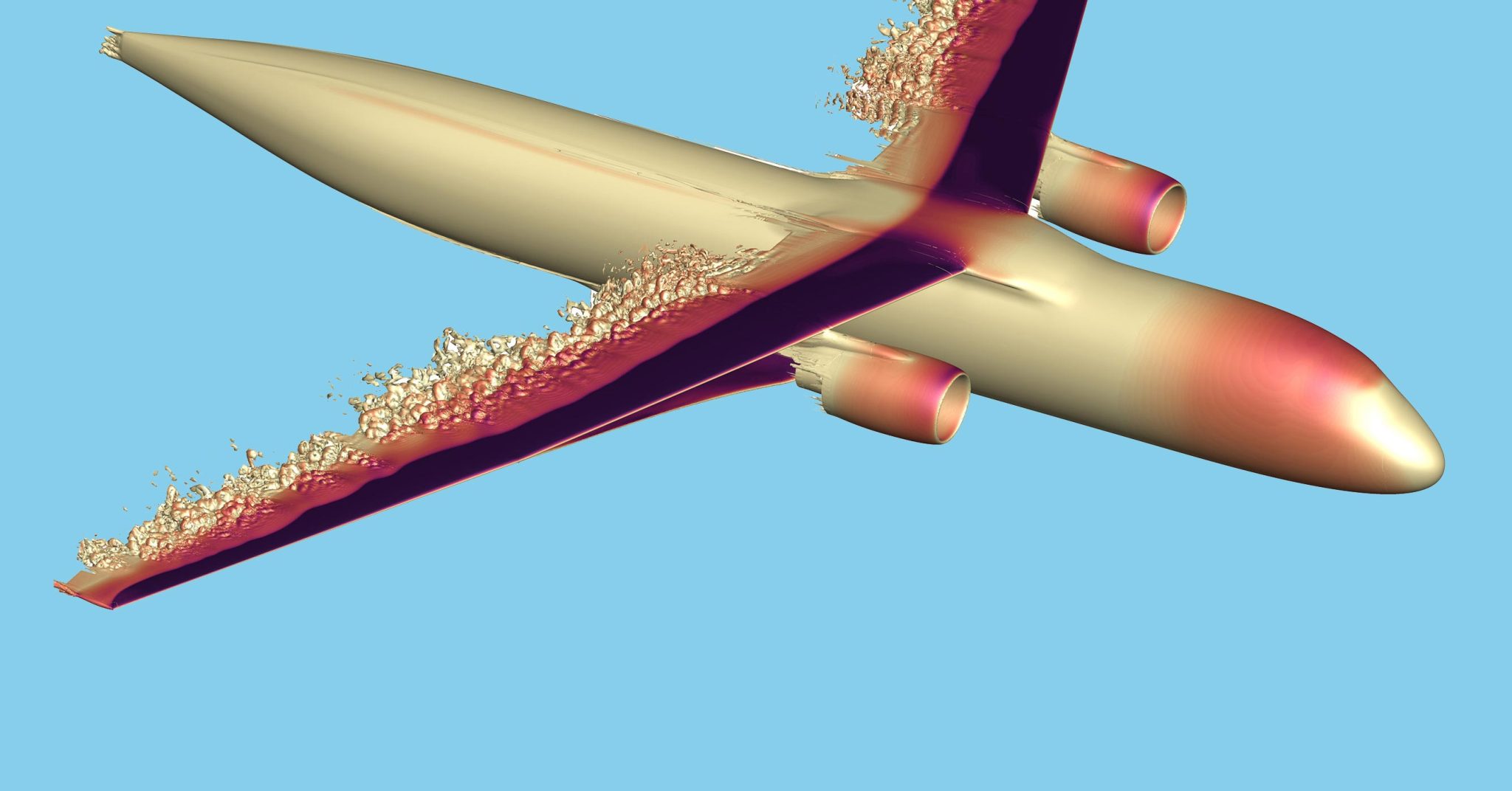
NASA’s high-performance computers have generated this image that displays a Transonic Truss Braced Wing (TTBW) aircraft concept being tested in a virtual wind tunnel. The image highlights how the aircraft’s wings interact with the surrounding air. Credit: NASA / Oliver Browne
No, it’s not hypermodern art. This image, generated by NASA’s high-performance computers, shows a Transonic Truss Braced Wing (TTBW) aircraft concept being tested in a virtual wind tunnel, showing how its wings interact with the air around them.
In this case, the dark red area along the front of the wing represents higher-speed airflow as the TTBW’s wings, which are thinner than those of today’s commercial airliners, pierce the air. The tan-colored area shows the relatively smooth wake generated by the aerodynamic wings.
A TTBW aircraft produces less drag due to its longer, thinner wings supported by aerodynamic trusses. In flight, it could consume up to 10% less jet fuel than a standard airliner.

Visualization of the concept Transonic Truss-Braced Wing aircraft’s free-air configuration showing time-averaged surface pressure coefficient contour (red is high, blue is low) and streamlines defined by surface skin friction. The image shows the shock along the span of the wing, including the spanwise variations of the shock location, and the streamlines highlighting the regions of separated flow downstream of the shock. Oliver Browne, NASA/Ames
The Advanced Supercomputing Division of NASA’s Ames Research Center in California created this image as part of an effort by the Transformational Tools and Technologies project to develop computational tools for TTBW research.
In January, NASA selected a TTBW concept from The Boeing Company for its Sustainable Flight Demonstrator project.
NASA and Boeing have joined forces to design a Transonic Truss-Braced Wing (TTBW) aircraft, incorporating cutting-edge technology that could significantly enhance the fuel efficiency of commercial aircraft. The TTBW aircraft has a unique structure, featuring a high aspect ratio wing and wing and jury struts, resulting in intricate flow phenomena such as transonic buffet, separated flow, and a turbulent wake. The standard industry practice employs Reynolds-Averaged Navier-Stokes (RANS)-based computational fluid dynamics (CFD) analysis for predicting buffet onset, but accurate forecasting may require more precise scale-resolving CFD simulations to anticipate buffet onset and separated flow development. Therefore, NASA’s Advanced Air Transport Technology Project has initiated a collaborative, multi-center effort to create new simulation techniques to forecast the TTBW’s performance and that of similar truss-braced wing configurations, particularly for predicting transonic buffet onset.